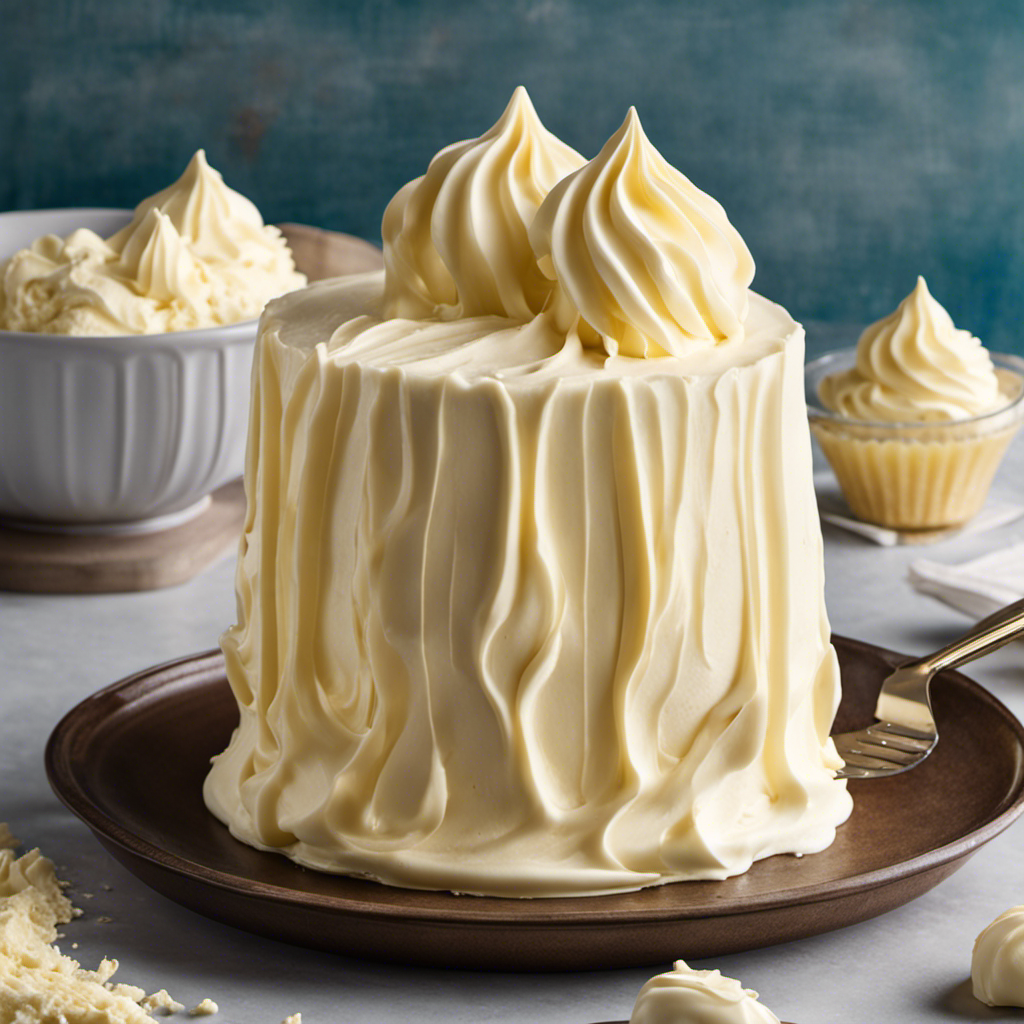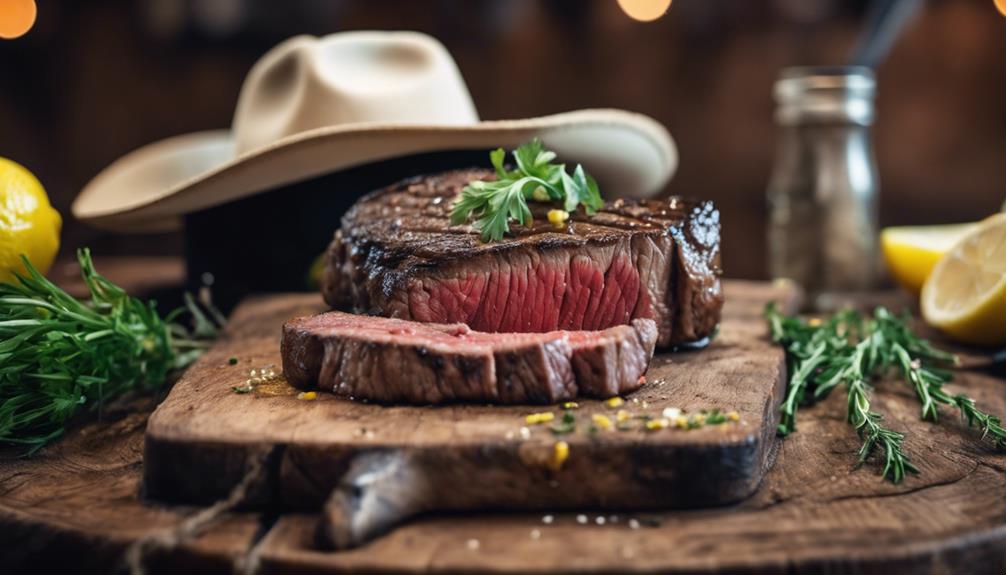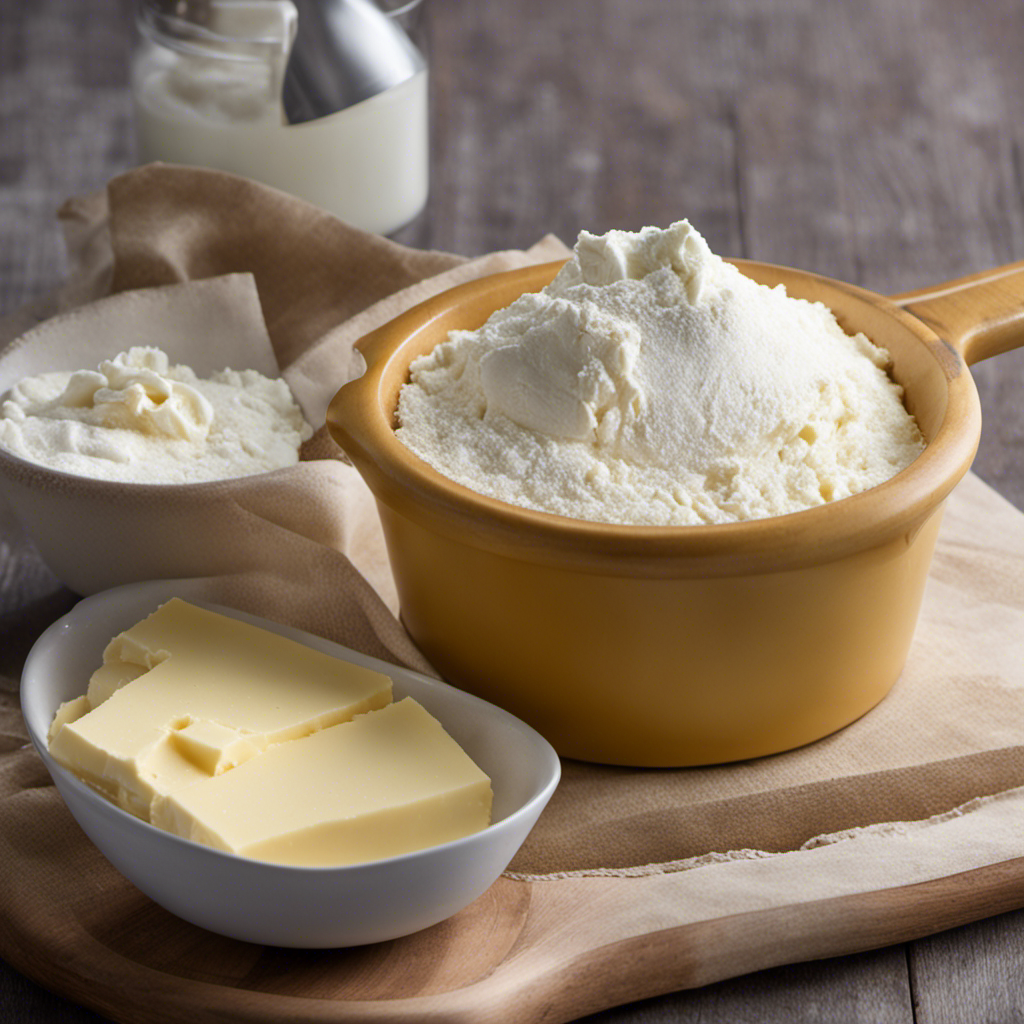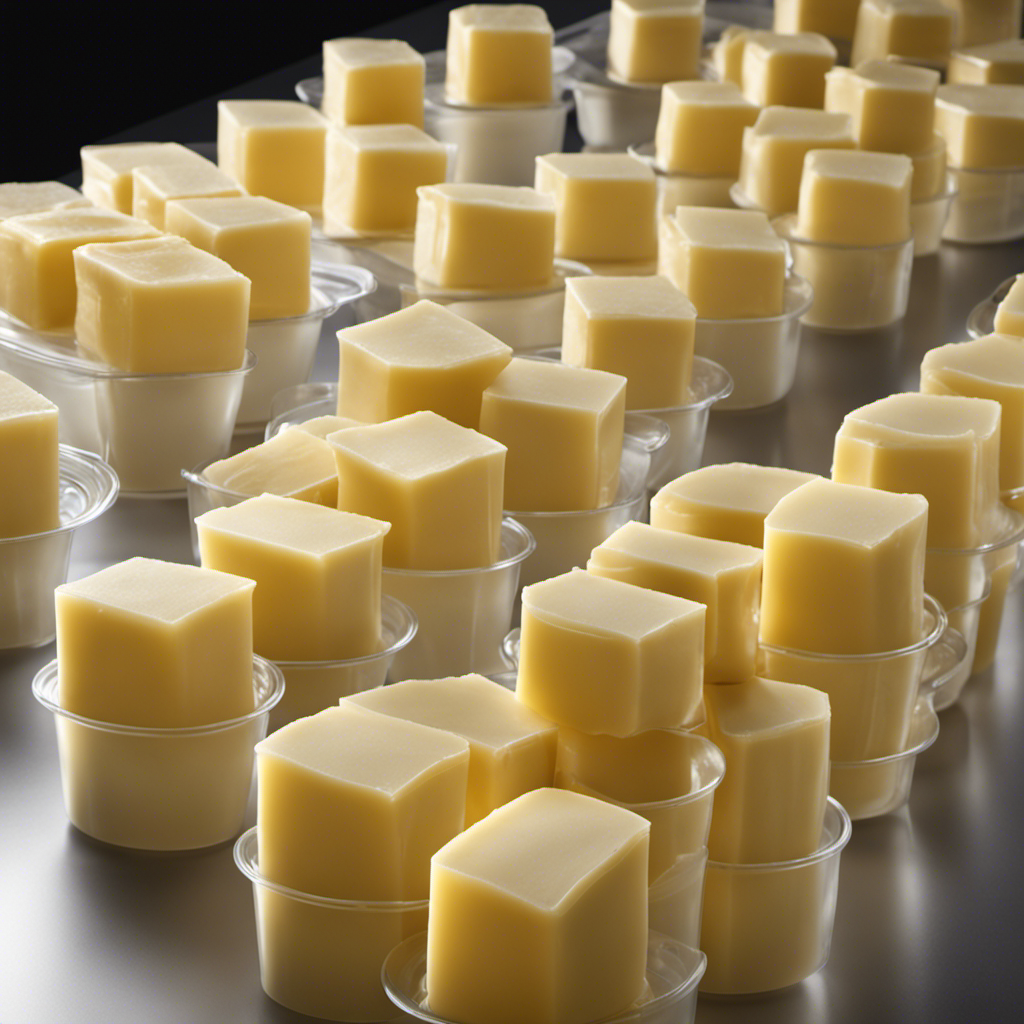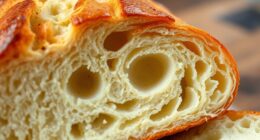As a fan of cannabis and a passionate baker, I have always been interested in knowing the THC content of my homemade edibles. This led me to explore how to test the THC levels in butter, a crucial component in numerous cannabis-infused delicacies.
In this article, I will guide you through the different methods, factors, and tools needed to accurately measure the concentration of THC in your butter. So let’s dive in and unlock the secrets of testing THC levels in butter!
Key Takeaways
- THC is the psychoactive compound found in cannabis and understanding its effects is crucial for making informed decisions about cannabis use.
- Lab testing ensures accuracy, consistency, and compliance with regulatory standards for THC levels in edibles.
- Different methods like Gas Chromatography, High-performance Liquid Chromatography (HPLC), Mass Spectrometry, and Immunoassay can be used to test THC levels in butter.
- Factors like the quality of cannabis, decarboxylation, extraction method, and butter-to-cannabis ratio can affect the THC concentration in butter.
Understanding THC and Its Effects
To understand THC and its effects, you should know that it is the psychoactive compound found in cannabis. THC, short for delta-9-tetrahydrocannabinol, is responsible for the euphoric and mind-altering effects commonly associated with marijuana use.
When THC interacts with the brain’s cannabinoid receptors, it stimulates the release of dopamine, creating a sense of relaxation and pleasure. However, it’s important to be aware of the potential risks of high THC levels.
Research suggests that frequent and heavy use of high THC cannabis strains may increase the likelihood of developing mental health disorders such as psychosis, anxiety, and depression. Additionally, consuming high levels of THC can impair cognitive function, coordination, and memory.
It’s crucial to understand the effects and potential risks of THC in order to make informed decisions regarding cannabis use.
Importance of Testing THC Levels in Edibles
The importance of testing THC levels in edibles cannot be understated.
Lab testing ensures the accuracy and consistency of THC levels in edibles, allowing consumers to make informed decisions about dosage and effects.
It helps in complying with regulatory standards for THC levels in edibles, ensuring that products are safe and legal for consumption.
Lab testing also helps manufacturers maintain quality control and consistency in their products, improving customer satisfaction and loyalty.
Moreover, it helps researchers and medical professionals in studying the effects of THC on the body and developing appropriate dosing guidelines.
Overall, lab testing plays a crucial role in ensuring the safety, quality, and reliability of THC levels in edibles, benefiting both consumers and the industry.
Different Methods to Test THC Levels in Butter
Accurate THC testing methods, testing cost, and efficiency are crucial factors to consider when analyzing the potency of cannabis-infused products.
In order to ensure accurate results, it’s essential to employ reliable testing methods that can accurately measure the THC content in the product.
Additionally, testing cost and efficiency play a significant role in determining the feasibility of testing on a larger scale. They can impact the overall cost and time required for testing.
Accurate THC Testing Methods
You can use various THC testing methods to ensure accuracy when testing the THC level in butter. Here are four methods that can help you understand the THC effects better:
-
Gas Chromatography: This method separates the different compounds in the butter sample and measures the amount of THC present.
-
High-performance Liquid Chromatography (HPLC): HPLC is another common method used to test THC levels in butter. It is known for its accuracy and precision.
-
Mass Spectrometry: Mass spectrometry is often used in conjunction with gas or liquid chromatography to identify and quantify THC in butter. It provides highly accurate results.
-
Immunoassay: Immunoassay is a rapid screening method that uses antibodies to detect THC. While it may not provide precise measurements, it is useful for initial screening purposes.
Testing Cost and Efficiency
To maximize efficiency and minimize costs, consider exploring different THC testing methods available. When it comes to testing the THC level in butter, it is crucial to find a method that offers both cost effectiveness and time efficiency. By choosing the right testing method, you can ensure accurate results without breaking the bank or wasting valuable time.
To emphasize the importance of cost effectiveness and time efficiency in THC testing, let’s take a look at the following table:
| Testing Method | Cost | Time |
|---|---|---|
| Method A | $$$ | 2 days |
| Method B | $$ | 1 day |
| Method C | $ | 4 hours |
As we can see from the table, Method C offers the most cost-effective and time-efficient option for testing THC levels in butter. By choosing this method, you can save both money and time, ensuring a streamlined testing process. It is always wise to consider these factors when selecting a THC testing method to achieve the best results without unnecessary expenses or delays.
Factors Affecting THC Concentration in Butter
Don’t underestimate the impact of factors on THC concentration in butter. The potency of THC in butter can vary greatly depending on various factors. Here are four key factors that can affect the potency of THC in butter:
-
Quality of cannabis: The quality of the cannabis used to make the butter plays a significant role in determining its THC concentration. Higher quality cannabis with a higher THC content will result in a more potent butter.
-
Decarboxylation process: Properly decarboxylating the cannabis before infusing it into butter is crucial. Decarboxylation activates the THC, making it more potent and bioavailable.
-
Extraction method: The method used to extract THC from cannabis and infuse it into butter can affect the final potency. Different methods, such as using heat or solvents, can result in varying levels of THC concentration.
-
Butter-to-cannabis ratio: The ratio of butter to cannabis used in the infusion process can also impact the potency. Adjusting the ratio can help control the THC concentration in the final product.
Understanding these factors is essential for accurately measuring THC concentration in butter. Now, let’s explore the tools and equipment needed for THC testing in butter.
Tools and Equipment for THC Testing in Butter
When it comes to testing THC levels in butter, having the right equipment is crucial. There are a few essential testing tools that I rely on to ensure accurate results.
In this discussion, I will delve into the importance of these testing equipment and explore the accuracy of THC tests.
Essential Testing Equipment
You’ll need a few essential pieces of testing equipment to accurately measure the THC level in your butter. Here are the four items you’ll need:
-
Digital Scale: A precise digital scale is crucial for measuring the exact amount of butter you’ll be testing. This ensures accurate calculations of THC concentration.
-
Mortar and Pestle: A mortar and pestle are used to grind the butter into a fine consistency. This allows for a more homogeneous distribution of THC throughout the sample.
-
Extraction Solvent: An extraction solvent, such as ethanol, is necessary to extract the THC from the butter. This process separates the THC from the other components of the butter.
-
Testing Kit: A reliable THC testing kit is indispensable for measuring the THC level in your butter. These kits typically include testing strips or cartridges that provide accurate results.
Having these essential tools in your testing process will enable you to accurately determine the THC level in your butter, ensuring a safe and consistent experience.
Accuracy of THC Tests
The accuracy of THC tests can be influenced by various factors. These include the quality of the testing kit and the extraction solvent used. When testing THC levels in butter, it is crucial to choose a reliable and accurate THC test kit specifically designed for home testing methods.
These test kits typically include a set of instructions and all the necessary components needed for accurate testing. The quality of the testing kit plays a significant role in the accuracy of the results. Additionally, the extraction solvent used can also impact the accuracy of the THC test.
It is recommended to use a high-quality extraction solvent that is specifically designed for extracting THC from butter. By considering these factors, you can ensure more precise and reliable THC test results when testing THC levels in butter.
Step-by-Step Guide to Testing THC Levels in Butter
To test the THC levels in your butter, first gather all the necessary materials. Here’s a step-by-step guide to help you through the process:
-
Prepare the butter sample: Start by weighing the butter and placing it in a heat-resistant container. Make sure to record the exact weight for accurate calculations later on.
-
Activate the THC: Decarboxylate the butter by heating it in an oven at a low temperature for about 30 minutes. This process converts the inactive THC-A into psychoactive THC.
-
Extraction: Add a solvent, such as ethanol or coconut oil, to the activated butter. This will help extract the THC from the butter.
-
THC testing: Use a THC testing kit or send the sample to a lab for analysis. Follow the provided instructions to determine the THC levels in your butter accurately.
Understanding THC testing protocols is crucial to ensure accurate results. By following these steps, you can confidently test the THC levels in your butter and make informed decisions about your consumption.
Interpreting THC Test Results for Butter
After conducting the THC testing on my butter, I was left with a set of test results that needed interpretation. This step is crucial in determining the potency of THC in the butter.
Using the testing kit, I carefully examined the color changes that occurred during the testing process. The intensity of the color change corresponds to the concentration of THC present in the sample. By comparing the color of my test results to the color chart provided in the kit, I was able to estimate the THC potency in my butter.
It is important to note that this method provides a rough estimate and may not be as accurate as professional laboratory testing. Nevertheless, it serves as a useful tool for detecting THC potency in homemade butter.
Transitioning into the next section, let’s explore some tips for ensuring accurate and reliable THC testing in butter.
Tips for Ensuring Accurate and Reliable THC Testing in Butter
For accurate and reliable THC testing in your homemade butter, it’s important to closely follow the instructions provided with your testing kit and pay attention to the timing of each step. Here are some tips to ensure accurate results and troubleshoot any testing errors:
-
Familiarize yourself with THC testing regulations: Different regions may have specific guidelines for testing THC levels in edibles. Make sure you are aware of the legal requirements in your area.
-
Use a reputable testing kit: Invest in a high-quality THC testing kit that is known for its accuracy and reliability. This will greatly increase the chances of obtaining accurate results.
-
Follow the instructions carefully: Pay close attention to the instructions provided with your testing kit. Each step is crucial for accurate testing, so make sure to follow them precisely.
-
Troubleshoot any errors: If you encounter any issues or errors during the testing process, refer to the troubleshooting section of your testing kit or contact the manufacturer for assistance. They can provide guidance on how to resolve any problems that may arise.
Frequently Asked Questions
What Are the Potential Health Risks Associated With Consuming High THC Levels in Edibles?
Consuming high THC levels in edibles can pose potential health risks. Long-term effects may include impaired memory, cognitive function, and increased anxiety. It is important to be aware of THC levels in edibles and consume responsibly.
Can THC Levels in Butter Vary Depending on the Strain of Cannabis Used?
Yes, THC levels in butter can vary depending on the strain of cannabis used. For example, a high-THC strain will result in butter with higher THC levels. Potency testing methods can accurately measure these variations.
Are There Any Legal Regulations or Restrictions on THC Levels in Edibles?
Legal regulations and restrictions on THC levels in edibles vary by jurisdiction. These regulations are in place to ensure consumer safety and prevent excessive intoxication. Testing the THC level in butter is important to comply with these regulations.
How Long Does It Take for THC to Be Metabolized in the Body After Consuming Edibles Made With High THC Butter?
After consuming edibles made with high THC butter, the metabolism rate of THC can vary depending on factors such as metabolism, dosage, and frequency of use. The detection time can range from a few days to several weeks.
Is There a Specific Shelf Life for Butter Infused With Thc?
There is no specific shelf life for butter infused with THC, as it can vary depending on storage conditions. To determine the THC level in butter, testing methods such as chromatography or immunoassays can be used.
Conclusion
In conclusion, testing THC levels in butter is crucial for anyone looking to have a consistent and reliable experience with edibles. By understanding the effects of THC and the factors that can affect its concentration in butter, individuals can ensure they are achieving the desired potency in their homemade cannabis-infused goodies.
With the right tools and equipment, following a step-by-step testing guide can help guarantee accurate results. So, whether you’re a seasoned cannabis enthusiast or a novice in the kitchen, testing your THC levels in butter is an essential step towards a successful and enjoyable edibles adventure.

